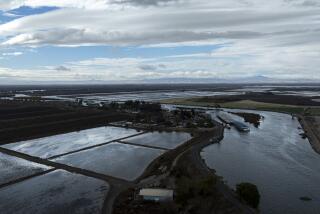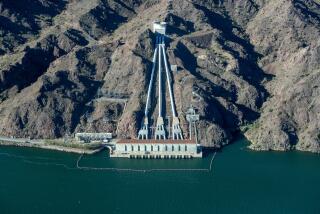Clean Water Act proposal would protect more water sources in West

WASHINGTON — The Obama administration proposed a long-awaited rule on Tuesday to clarify that the Clean Water Act protects wetlands near rivers and waterways fed by seasonal thaws and rains — a decision that could particularly shield water sources in the West.
Proposed by the Environmental Protection Agency and the Army Corps of Engineers, the draft Waters of the U.S. rule is aimed at defining the scope of the Clean Water Act after two Supreme Court decisions in the last 15 years led to confusion about which waterways were under federal protection, said EPA Administrator Gina McCarthy.
At issue is the status of waterways that do not flow year-round or are not permanent lakes, but streams that flow intermittently or after heavy rains, and riparian wetlands. Many small, intermittent waterways feed into drinking-water sources, especially in the West. Without protections, theses tributaries and wetlands could be polluted or filled in, as has happened since the Supreme Court decisions, environmentalists said.
“The health of our rivers, lakes, bays and coastal waters depends on the smaller interconnected streams and wetlands that feed them,” McCarthy said. “These places are where we get our drinking water. Our farmers rely on these vital waters to grow the fuel, food and fiber that feed our nation. Our businesses rely on abundant, usable water to manufacture.”
Under the draft rule, most intermittent and rain-dependent streams, as well as wetlands near rivers and streams, would be protected by the Clean Water Act. Building, dumping or discharging in those waterways would require a permit from the EPA or the Army Corps of Engineers.
For bodies of water farther away from perennial waterways, the need for permits would be examined on a case-by-case basis. A third category, including man-made ponds and many kinds of ditches, would be exempt from regulation.
The effort to draft a rule to clearly define the scope of the Clean Water Act has been vigorously opposed by agricultural interests and industry, especially construction companies. They argue that the Obama administration’s definitions would expand the reach of the law and create onerous conditions for business. The National Assn. of Home Builders contends that the new rule would drive up the price of newly constructed houses.
Kevin Kelly, the association’s chairman and a developer from Wilmington, Del., said the EPA had “added just about everything into its jurisdiction by expanding the definition of a tributary — even ditches and man-made canals, or any other feature that a regulator determines to have a bed, bank and high-water mark. It’s a waste of taxpayer resources to treat a rainwater ditch with the same scrutiny as we would the Delaware Bay.”
For about 30 years after the Clean Water Act passed in 1972, Congress and the EPA used an expansive definition of the protected waterways, said William W. Buzbee, director of the environmental law program at Emory University. But the Supreme Court decisions raised questions about the value of small upstream waterways and riparian wetlands.
“During a time of uncertainty, the federal government’s enforcement of the law was weakened for fear of overstepping,” Buzbee said.
From 2004 to 2009, the country lost tens of thousands of acres of wetlands. About 70% of that land was lost on the Gulf Coast to subsidence and rising sea levels, but the remainder inland disappeared because of development, according to the Fish and Wildlife Service.
The EPA and the Army Corps of Engineers say the draft rule is rooted in a September 2013 peer-reviewed assessment of more than a thousand science articles that look at the role of those bodies of water in the country’s larger hydrology.
The new rule would not be issued until after the completion of the final version of the assessment, the EPA said.
The assessment, Connectivity of Streams and Wetlands to Downstream Waters, concluded that “streams, regardless of their size or how frequently they flow, are connected to and have important effects on downstream waters.” The report also said riparian wetlands were connected to those smaller streams and filtered out pollution before it reached larger waterways.
Nearly 60% of the thousands of miles of streams in the United States flow seasonally or after heavy rains, especially in the drought-prone West, the report said. One in three Americans, or 117 million people, gets drinking water from systems fed by those streams, according to the EPA.
Environmentalists and hunting and fishing organizations welcomed the proposed rule. There will be a 90-day comment period after it is published in the Federal Register in the coming weeks.
“Today’s action is vital to the health of America’s great waters,” said Margie Alt, executive director of Environment America. “By protecting the streams that feed into mighty rivers like the Mississippi and the wetlands that filter pollution from the Puget Sound and other iconic waters, this rule is a safety net for all the waterways Americans care about.”
More to Read
Start your day right
Sign up for Essential California for news, features and recommendations from the L.A. Times and beyond in your inbox six days a week.
You may occasionally receive promotional content from the Los Angeles Times.







